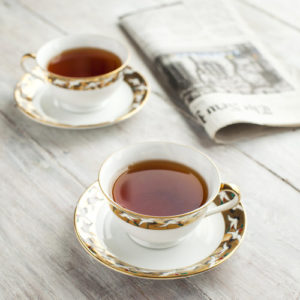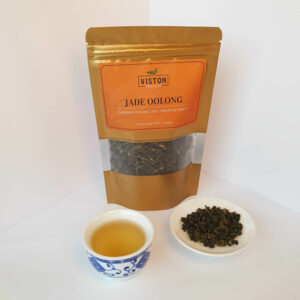Tea Compression: Making of a Cha Bing
A cha bing is a modified form of tea. It is made by compressing tealeaves tightly to form a discus. In the article What are Compressed Teas we have discussed the form of the category, so in this one, we shall see how a compressed tea is made. We shall look at the most popular form, cha bing ( i.e. tea discus ).
The word bing is a romanisation of the Chinese word for anything that is in a discus form. For example, the metal discus used in Olympic Games is a tié-bing. A pizza is a bou-bing; etc.
I have edited an old video taken in a medium size traditional puer factory in Yunnan to turn it into an understandable sequence. The tea is a shengcha puer from a highly reputable origin, Zhangjia Sandui in the famous region Bulang-shan.
I have laid out here the steps of the process to help you understand the video better:
- The leaves are weighed and put into a stainless steel cylinder. Traditionally one cha bing used 264.6g ( 7 traditional taels ) of leaves. Popular current practices are 357g, 400g and 500g.
- The cylinder is put onto a steam vent. The steam softens the leaves for rolling and compressing
- The tealeaves are transferred into a cylindrical cotton bag for rolling into a “cake” form
- A knot is tied to tighten the form. This knot forms the characteristic centre indention in all cha bings
- The “cake” is put under a press and pressure is applied to compact the tealeaves. In the video, the use of a hydraulic press employing two metric tons of pressure. Traditionally this was done in stone moulds where people had to use their own body weight on them.
- The formed cha bing ( i.e. tea discus ) is then removed from the cotton bag and laid out in racks to put through a low temperature oven ( 45~60°C dependent on various practices and the kind of tea involved ) for drying.
- Wrapping in rice paper and wholesale packaging.
Contemporary cha bing comes in all sizes. From a hundred kilogram boulder to 10g tinny tablets, the size decision have become a factor outside of pure packaging considerations. Besides the cha bing, the other two popular forms: the bricks ( cha zhuan ) and the mushrooms ( tuocha ), are made quite similarly.
Note also that the tea discus, i.e. cha bing, is sometimes referred to as tea cake, cake tea, bing cha etc. Many in Mainland China, including manufacturers are using the term bing cha. This is a deviation from tradition and has adapted an English language pattern in the Chinese language. I think it is depriving certain potency in the original expression. Either tea discus or cha bing are much more appropriate names.












